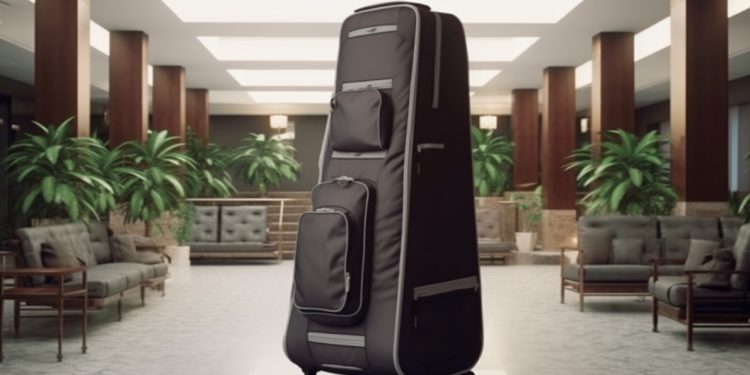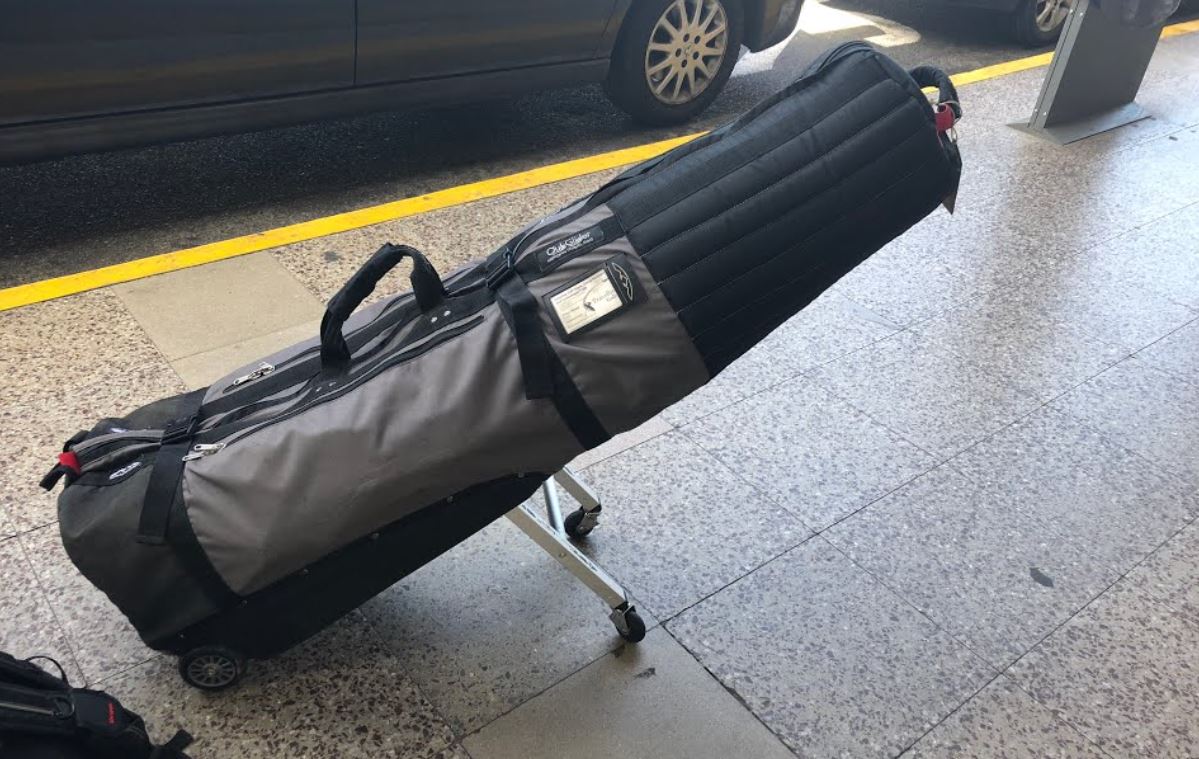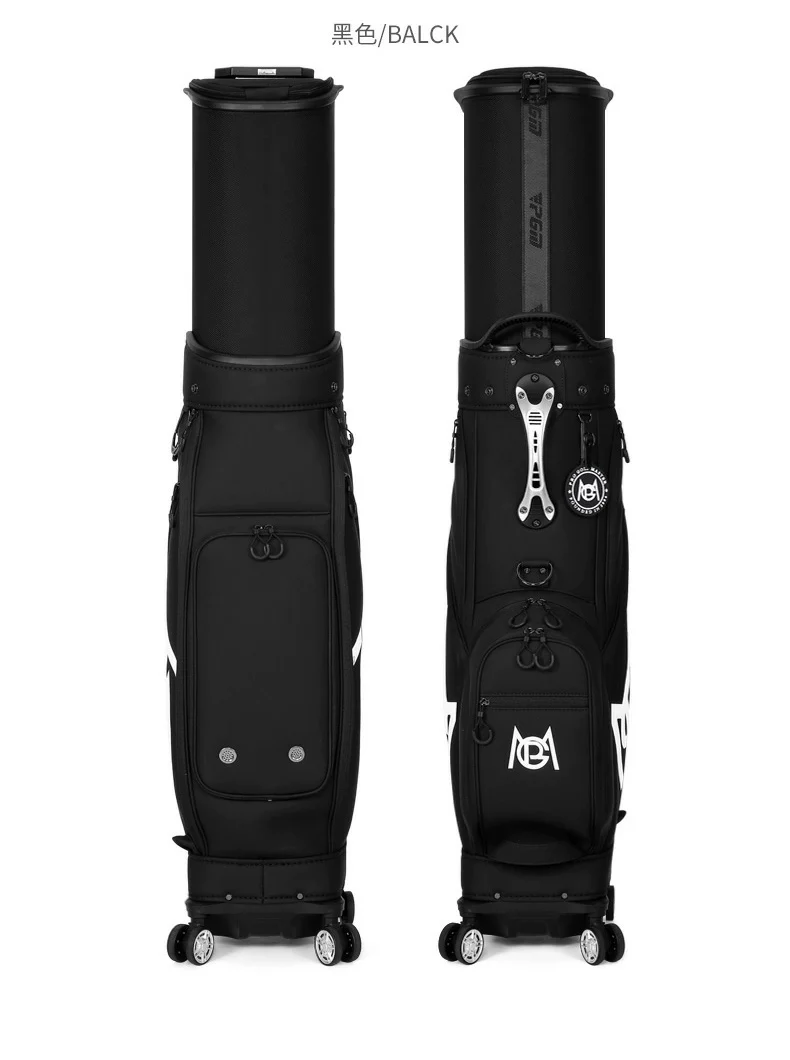Hard shell golf bags offer superior impact protection from drops and crushing, while soft bags provide better storage and lower weight for easier travel.

Table of Contents
- What Defines a Hard Shell Golf Travel Bag?
- What Characterizes a Soft Shell Golf Travel Bag?
- The Head-to-Head Comparison: Key Factors for Your Decision
- Are Hybrid Golf Travel Bags the Perfect Compromise?
- How to Choose the Right Golf Travel Bag for You?
- Beyond the Bag: Essential Packing Tips for Maximum Club Safety
- The Beldtura Perspective on Travel Durability
Traveling with your prized golf clubs can be a source of anxiety. You’ve invested significantly in your equipment, and the thought of it being damaged by aggressive baggage handlers is enough to make any golfer nervous. The central debate for protecting your investment often comes down to one question: should you use a hard shell or a soft shell travel bag? Each type presents a compelling case, but the right choice depends on your priorities, travel habits, and what level of risk you’re willing to accept.

What Defines a Hard Shell Golf Travel Bag?
A hard shell golf travel bag, often called a hard case, is the fortress of golf club transport. Its defining feature is a rigid, non-flexible exterior designed to create an uncompromising barrier between your clubs and the outside world. Think of it as a personal suit of armor for your driver, irons, and putter. This rigidity is its greatest strength, offering a level of protection that soft materials simply cannot match.

Common Materials and Construction
The resilience of a hard case comes from its materials. Most are constructed from high-impact plastics known for their durability and strength-to-weight ratio. The two most common are:
- ABS (Acrylonitrile Butadiene Styrene): A tough and rigid thermoplastic polymer, ABS is highly resistant to impact, scratches, and chemical corrosion. It provides a very strong protective shell, though it can be heavier than other options.
- Polycarbonate: This material is lighter than ABS and offers excellent impact resistance by flexing slightly upon impact and then returning to its original shape. It’s the same material used in bulletproof glass and high-end luggage, prized for its ability to absorb energy without cracking.
These cases are typically a clamshell design, hinged to open fully for easy packing and secured with strong latches, which are often lockable for enhanced security. The interior is usually lined with foam padding to cushion the clubs and prevent them from shifting during transit.
The Core Promise: Unyielding Protection
The primary reason a golfer chooses a hard shell bag is for its unparalleled protection against blunt force trauma. When your bag is dropped, stacked under dozens of other heavy suitcases, or otherwise mishandled, the rigid exterior deflects and distributes the force. This significantly reduces the risk of snapped driver shafts or dented clubheads—the most catastrophic types of travel damage. For golfers who spare no expense on their equipment and fly frequently, this peace of mind is often the deciding factor.
What Characterizes a Soft Shell Golf Travel Bag?
A soft shell golf travel bag offers a completely different approach to club protection, prioritizing flexibility, lower weight, and convenient storage. Unlike their rigid counterparts, these bags are constructed from durable fabrics and rely on substantial internal padding and structural reinforcement to safeguard your clubs. They are by far the more popular option you’ll see at airport baggage claims, favored for their practicality and user-friendly features.
Fabric and Padding Deep Dive
The quality of a soft bag is directly tied to the materials used. Premium models are not just simple canvas sacks; they are engineered with advanced textiles designed for abrasion resistance and tensile strength. Key materials include:
- Ballistic Nylon: Originally developed for flak jackets, this thick, tough nylon fabric is exceptionally resistant to tearing and abrasion. A high denier rating (e.g., 1680D) indicates a very durable weave.
- Cordura: A well-respected brand of fabric known for its ruggedness and long-lasting durability. It’s a staple in high-performance gear, from military equipment to motorcycle apparel.
- Polyester: While often found on more budget-friendly bags, high-denier polyester (e.g., 600D or 1200D) can still offer excellent durability and resistance to stretching and shrinking.
Inside, these bags feature thick foam padding, particularly around the top where the clubheads rest. This padding is designed to absorb shock and prevent clubs from clattering against each other. Many quality soft bags also include internal compression straps to hold your golf bag securely in place, minimizing movement.
The Advantage of Flexibility
The greatest strength of a soft shell bag is its flexibility—both literally and figuratively. They are significantly lighter than hard cases, which can be the difference between paying for an overweight bag and staying under the airline’s limit. This lightness also makes them easier to lift and maneuver through a busy airport. Furthermore, when not in use, most soft bags can be folded or compressed into a much smaller size, making them easy to store in a hotel room closet, the trunk of a rental car, or at home.
The Head-to-Head Comparison: Key Factors for Your Decision
Choosing between a hard and soft case involves weighing several critical factors. What matters most to one golfer may be a minor inconvenience to another. Here is a direct comparison to help clarify your decision.
| Feature | Hard Shell Travel Bag | Soft Shell Travel Bag |
|---|---|---|
| Impact Protection | Excellent. Superior defense against crushing and direct impacts. | Good to Very Good. Relies on padding. Vulnerable to severe crushing. |
| Weight | Heavier. Increased risk of overweight baggage fees. | Lighter. Easier to manage and stay within airline weight limits. |
| Storage | Bulky. Difficult to store in cars and at home. | Excellent. Often collapsible for easy storage. |
| Maneuverability | Can be cumbersome due to size and rigidity. | Generally easier to handle, lift, and fit into spaces. |
| Durability | Prone to cracks or broken latches over time. | Fabric can tear or scuff, but high-end models are very resilient. |
| Price | Generally more expensive. | Wide price range, with many affordable, high-quality options. |
Protection Against Impact: Who Wins?
For sheer, raw protection from crushing force, the hard shell bag is the clear winner. Its rigid structure is purpose-built to prevent the bag from being compressed, which is the primary cause of snapped shafts. However, a high-quality, well-padded soft bag, especially when used with a stiff arm or backbone (an internal support rod), offers formidable protection against most impacts and is more than sufficient for the majority of travelers. The stiff arm accessory is a critical addition for soft bag users, as it effectively mimics the crush-proof nature of a hard case.
Weight and Airline Fees: A Practical Concern
Weight is a major logistical and financial consideration. Soft shell bags have a significant advantage here. They can be several pounds lighter than hard cases, providing more leeway for packing extra shoes, balls, or rain gear without exceeding the typical 50-pound airline limit. A heavy hard case can easily push a fully loaded bag into overweight territory, leading to costly fees on every flight.
Storage and Portability: Beyond the Airport
Think about what happens when you arrive at your destination. A bulky hard case can be a challenge to fit into the trunk of a rental car along with other luggage. At home or in a hotel, its large, rigid form takes up significant storage space. Soft shell bags are far more practical in this regard. Their ability to be folded or compressed makes them vastly easier to manage once the clubs are unpacked.
Are Hybrid Golf Travel Bags the Perfect Compromise?
Recognizing the pros and cons of each type, manufacturers developed the hybrid golf travel bag. This design seeks to offer the best of both worlds by combining a protective, hard shell top with a lighter, flexible soft shell body. The hard top portion covers the most vulnerable part of your set—the clubheads and the top of the shafts—providing excellent crush protection where it’s needed most.
The soft body of the bag keeps the overall weight down and allows the bag to be collapsed for easier storage than a full hard case. For many golfers, a hybrid bag represents the ideal middle ground, delivering enhanced protection without the significant weight and storage penalties of a traditional hard case. It’s a compelling option for those who want more peace of mind than a standard soft bag can offer but find a full hard case too impractical.
How to Choose the Right Golf Travel Bag for You?
The best choice is deeply personal and depends on your specific travel profile. Answering the question of which protects better is not just about the bag itself, but about how you travel.
For the Frequent Flying Golfer
If you travel by air multiple times a year for golf, your clubs face repeated encounters with baggage systems. For you, maximum protection is paramount. A hard shell case or a premium hybrid case is a wise investment. The added durability and superior crush protection justify the extra weight and cost over the long term, offering consistent peace of mind on every trip.
For the Occasional Vacationer
If you take one or two golf trips a year, a high-quality soft shell bag with a stiff arm is likely your best option. It provides excellent protection for infrequent travel while offering superior convenience in terms of weight and storage. The cost savings can be allocated to other parts of your trip, and you won’t have a bulky case to store for the other 50 weeks of the year.
For the Road Tripper
When you’re primarily traveling by car, you have complete control over how your clubs are handled. Crushing from other baggage is not a concern. In this scenario, a lightweight soft shell bag is the ideal choice. It’s easy to pack in a car, protects from scuffs and scratches, and is simple to carry from the car to the clubhouse.
Beyond the Bag: Essential Packing Tips for Maximum Club Safety
Regardless of which bag you choose, how you pack can dramatically improve your clubs’ safety. Proper preparation is a universal key to secure travel.
- Invest in a Stiff Arm: As mentioned, this is the single most important accessory for any soft shell bag user. This adjustable aluminum rod is set to be slightly longer than your longest club (your driver), taking the brunt of any vertical impact.
- Wrap Your Club Heads: Use extra towels or iron headcovers to bundle your clubheads together. This prevents them from clanking against each other, which can cause nicks and scratches, and adds an extra layer of shock absorption.
- Pack Strategically: Use soft items like clothes, towels, and rain gear to fill the empty spaces around your golf bag. This creates a tighter, more cushioned fit, preventing the bag from shifting inside the travel cover during transit.
- Remove Detachable Heads: If your driver or woods have adjustable heads, consider removing them and packing them in a separate pocket. This shortens the club and removes the weakest point—the hosel—from the risk of snapping.
The Beldtura Perspective on Travel Durability
At Beldtura Leather, our philosophy is built on the belief that how you travel matters. The gear you choose should not only protect your valued possessions but also reflect a commitment to quality and enduring style. While your golf clubs demand specialized protection, the principles of superior craftsmanship and material integrity are universal. The choice between a hard or soft case for your clubs parallels the choices one makes for all travel goods.
We craft our duffle bags, backpacks, and travel kits from full-grain leather because it offers an unmatched blend of resilience and elegance. It’s a material that, like a well-made golf bag, is designed to withstand the rigors of transit and develop character over time. A discerning traveler understands that investing in quality is a practical decision. Just as you seek a travel bag that won’t fail your clubs, your accompanying luggage should offer the same reliability for your personal effects. A robust, thoughtfully designed leather duffle is the perfect companion for a golf weekend, ensuring the rest of your gear arrives as securely and stylishly as your clubs.

